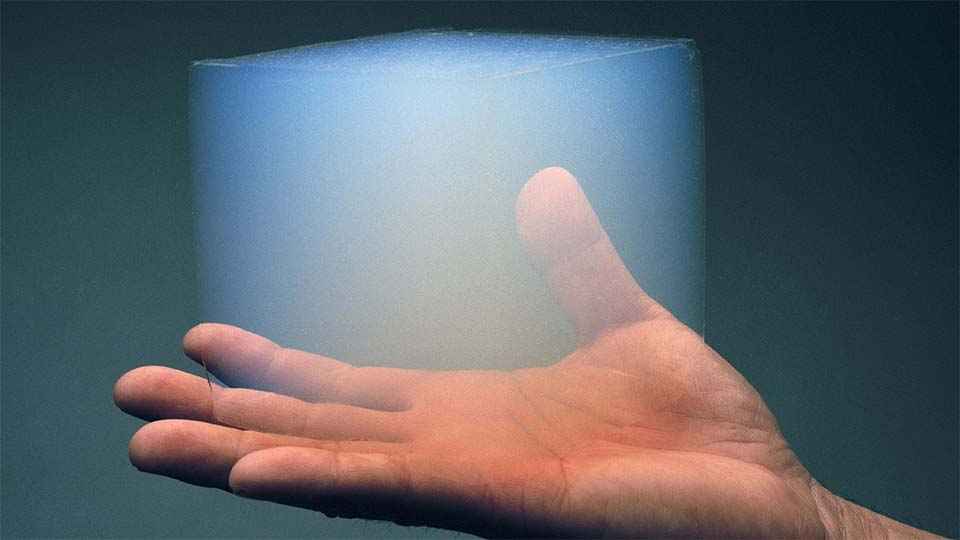Silica aerogel can help make Mars habitable in parts

Researchers from Harvard University have proposed an approach that could make portions of Mars habitable.
The same material can be incorporated into greenhouses and habitats for any future pioneers that visit Mars.
Apart from the Earth, Mars is the most habitable planet in the Solar System, and making the entire planet habitable has been one of the most popular themes of Science Fiction. Mars has a tenuous atmosphere, one that is constantly escaping because of the ravages of the Sun. In fact, NASA has even come up with a proposal for a magnetic shield to protect the atmosphere of the planet, but such projects are still far into the future. Carl Sagan was the first to suggest a practical way in which an atmosphere could be introduced to Mars, by vaporising the carbon dioxide ice and water ice trapped beneath the northern polar ice cap. This was a suggestion first proposed in 1971. In 2018, NASA funded researchers showed that there simply was not enough carbon dioxide in Mars that could be released into the atmosphere, to warm the planet enough so that liquid water could exist on the surface. Even if all the resources on Mars would be used up, the resulting atmosphere would only be seven percent as dense as the Earth, and not enough to warm the planet sufficiently for say growing crops. The study also showed that most of the carbon dioxide was actually trapped in inaccessible locations. The conclusion was that using current technologies, Mars could simply not be terraformed.
Now, researchers from Harvard University have proposed an approach that could make portions of Mars habitable, and allow any future manned missions to grow food from the regolith. The approach uses existing technology, and is feasible right now. The idea is to introduce silica aerogel, directly into the regolith, or the dry Martian soil. Silica aerogel is an incredibly light material, made up of 99 percent air. It is a bit like styrofoam, and can play the same role on Mars as the greenhouse gases do on Earth. It can trap heat, and make the surface warm enough for liquid water to exist on the surface, allowing for the cultivation of crops.
The aerogel is translucent, allowing essential sunlight for photosynthesis to pass through, and blocking harmful ultraviolet radiation at the same time. A shield of silica aerogel between two to three centimeters in thickness can permanently increase surface temperatures to allow liquid water to exist on the surface. The approach does not require an energy source for producing heat, and the maintenance is minimal, as there are no complicated structures and moving parts. Additionally, the same material can be incorporated into greenhouses and habitats for any future pioneers that visit Mars. The approach can potentially allow manned exploration of the Martian surface to be more expansive, and cover more regions. Using silica aerogel to reduce the surface temperatures of Mars in local islands of habitability, will be particularly effective in the middle latitudes, in places where there is water ice trapped near the surface.
Robin Wordsworth, Assistant Professor of Environmental Science and Engineering at Harvard explains, “this regional approach to making Mars habitable is much more achievable than global atmospheric modification. Unlike the previous ideas to make Mars habitable, this is something that can be developed and tested systematically with materials and technology we already have.”
The researchers were inspired from a process that takes place naturally on the red planet. Just like the Earth, Mars has polar ice caps as well. While the polar ice caps on Earth are made up of water, on Mars, they are made up of a combination of water and carbon dioxide. The carbon dioxide ice provides a solid state greenhouse gas effect, trapping the heat just like the gaseous form. The ice traps heat beneath the surface, eventually causing the ice to rupture in black spots, where gas and soil escape from beneath the surface. The silica aerogel provides a solid state greenhouse gas effect just like the carbon dioxide ice. It is a good insulator, and is translucent enough to allow sunlight to pass through it.
Solid state greenhouse gas effect at the polar regions of Mars
The experiment is a proof of concept, and there are still some challenges to overcome. The climate model used for the simulation showed that it would take two Martian years or four Earth years to produce a permanent layer of subsurface liquid water. There is also the question of getting the aerogel to Mars. It would require shipping large amounts of the material, or finding a way to manufacture it in situ. The researchers want to test the approach in the field, such as the McMurdo Dry Valleys in Antarctica or the Atacama desert in Chile, both of which have deserts with little moisture.
Sources: JPL, Harvard SEAS
Digit NewsDesk
Digit News Desk writes news stories across a range of topics. Getting you news updates on the latest in the world of tech. View Full Profile






